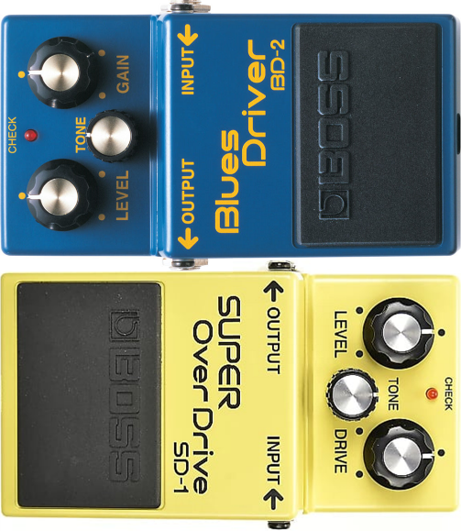Howdy, Stranger!
It looks like you're new here. If you want to get involved, click one of these buttons!
Categories
- 241.1K All Categories
- 22 >> Start Here <<
- 12 New Members
- 8 FAQs
- 86.5K Gear
- 39.4K Guitar
- 3.4K Acoustics
- 1.3K Bass
- 14.6K Amps
- 17.2K FX
- 262 Digital & Modelling
- 765 Other Instruments
- 8.2K Making & Modding
- 419 Gear Reviews
- 107 Guitar Reviews
- 73 Amp Reviews
- 118 FX Reviews
- 87 Other Reviews
- 748 Made in the UK
- 970 Theory
- 1.8K Technique
- 2.1K Live
- 3.2K Studio & Recording
- 2.1K Making Music
- 218 Events
- 15 Guitar Show 2018
- 827 Plug My Stuff
- 104.9K Classifieds
- 41K Guitars £
- 2.8K Acoustics £
- 137 LH Guitars £
- 892 Basses £
- 10.5K Parts £
- 18.3K Amps £
- 34K FX £
- 2.8K Studio & Rec £
- 6.1K Misc £
- 464 Personnel
- 54.6K Chat
- 36.5K Off Topic
- 1.1K Tributes
- 6.6K Music
In this Discussion
Become a Subscriber!
Subscribe to our Patreon, and get image uploads with no ads on the site!
Tuner in the loop vs additional boost/mute in the loop
Here’s a question:
I currently have my TU2 at the end of my input chain. I have a Digitech Whammy early on in the input chain but I don’t use the dry out for the tuner because I need the TU2 predominantly as a mute (though occasionally as a tuner too).
I also have a clean boost at the end of the loop chain for solo boosts.
When I use the tuner to mute my signal I still get the hiss from the amp’s input stage as well as the chorus and delays in the loop. If I mute using my clean boost turned to zero at the end of the loop, the signal is utterly silent (and this also enables me to swap cables and pedals in the loop silently).
So, what should I do:
a) put the tuner in the loop at the very end so it can mute everything?
b) get another boost also at the end of the loop, permanently set to zero and put my TU2 on a spur before the amp, using the Digitech Whammy’s dry out?
I currently have my TU2 at the end of my input chain. I have a Digitech Whammy early on in the input chain but I don’t use the dry out for the tuner because I need the TU2 predominantly as a mute (though occasionally as a tuner too).
I also have a clean boost at the end of the loop chain for solo boosts.
When I use the tuner to mute my signal I still get the hiss from the amp’s input stage as well as the chorus and delays in the loop. If I mute using my clean boost turned to zero at the end of the loop, the signal is utterly silent (and this also enables me to swap cables and pedals in the loop silently).
So, what should I do:
a) put the tuner in the loop at the very end so it can mute everything?
b) get another boost also at the end of the loop, permanently set to zero and put my TU2 on a spur before the amp, using the Digitech Whammy’s dry out?
Roland said: Scales are primarily a tool for categorising knowledge, not a rule for what can or cannot be played.
Supportact said: [my style is] probably more an accumulation of limitations and bad habits than a 'style'.
Supportact said: [my style is] probably more an accumulation of limitations and bad habits than a 'style'.
0 LOL 0
LOL 0 Wow! 0
Wow! 0 Wisdom
Wisdom
 LOL 0
LOL 0 Wow! 0
Wow! 0 Wisdom
Wisdom Base theme by DesignModo & ported to Powered by Vanilla by Chris Ireland, modified by the "theFB" team.



Comments
If you use effects, particularly modulation or delay, you're likely to confuse the tuner if it's last in line.
Don't talk politics and don't throw stones. Your royal highnesses.
That’s a good point! Wow. Do people do that? What a brilliant idea!
Supportact said: [my style is] probably more an accumulation of limitations and bad habits than a 'style'.
http://i.imgur.com/uI5PSee.jpg
Guitar> comp> wah> whammy>(tuner)> phase90> OD> (loop)> short delay > long delay > chorus > boost > mute.
So the tuner is on a spur out of the whammy dry out, and the mute is at the end of the complete chain.
This is officially the best pedal board ever and should become the default for all guitarists.
Supportact said: [my style is] probably more an accumulation of limitations and bad habits than a 'style'.